Web 2.0 Is Transforming Relationships Between Customers and Companies*
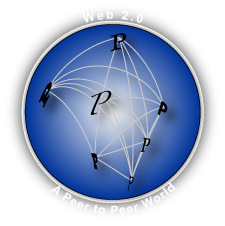 I’ll risk using a hype-laden term like “Web 2.0” in the title: I think most of us have been around long enough to understand that hype doesn’t mean that nothing is there, although it can distract us from seeing things that we should be watching. I’ll risk using a hype-laden term like “Web 2.0” in the title: I think most of us have been around long enough to understand that hype doesn’t mean that nothing is there, although it can distract us from seeing things that we should be watching.
I have been in the thick of the “adoption curves” of Java, e-business transformation and SOA/Web services (detail). They have been instrumental in creating a new information infrastructure and business process capabilities. “Web 2.0” will prove to be the most transformational so far because it is changing relationships. It changes individuals’ relationships with each other, and it will change how companies and the customers relate to each other. It will demand “Marketing 2.0.”
Tectonic Shift
As I argued in The 3.x Economies, we are transitioning away from the Industrial Economy and entering the Knowledge Economy. In the Industrial Economy, companies created value by manufacturing products efficiently based on their core competencies, and they marketed products to customers. They also created and marketed services on a large scale. “Marketing” grew as a profession during the 20th century when […]
Immensely Valuable Field Guide for Word of Mouth Practitioners—with a Twist
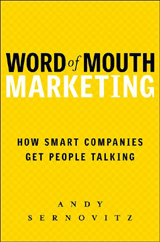 Word of Mouth Marketing is an exceptionally useful, insightful and surprising book. Andy Sernovitz has done a masterful job at creating a brief, lucid and tactical guide to realigning your company’s relationships with your customers, quickly and inexpensively. It is very straightforward, honest and full of practical techniques. Moreover, it is very human because it addresses customers as human beings, not demographics. I suspect that this aspect of the book might peeve those marketers that are invested in the difficulty and complexity of their craft. Think about it: when customers were (relatively) mute and invisible, marketers were the intermediary between the enterprise and the customer; in the absence of the customer’s voice, they created models and theories to simulate it. WOM, powered by Web 2.0, means that customers can talk in their own words, and companies can listen. The customer’s back! Word of Mouth Marketing is an exceptionally useful, insightful and surprising book. Andy Sernovitz has done a masterful job at creating a brief, lucid and tactical guide to realigning your company’s relationships with your customers, quickly and inexpensively. It is very straightforward, honest and full of practical techniques. Moreover, it is very human because it addresses customers as human beings, not demographics. I suspect that this aspect of the book might peeve those marketers that are invested in the difficulty and complexity of their craft. Think about it: when customers were (relatively) mute and invisible, marketers were the intermediary between the enterprise and the customer; in the absence of the customer’s voice, they created models and theories to simulate it. WOM, powered by Web 2.0, means that customers can talk in their own words, and companies can listen. The customer’s back!
However, this direct customer connection also means that marketing will be much more fun and less frustrating for companies that understand the shift and engage their customers. This direct, fun and productive new reality emanates from the book’s every […]
Retrofitting GM, the Quintessential Industrial Economy Enterprise reflects Knowledge Economy disruption as production-focused enterprises languish as customers continue to forsake them.
 As readers of these pages know well, I estimate that one of the most poignant changes that faces Industrial Economy enterprises is shifting their primary focus from production and operations to the customer. The Industrial Economy mechanized work and production, and by any measure it created unprecedented wealth by drastically lowering per-unit costs of any kind of product you can name, bringing more products within the means of more people. This worked extremely well while demand exceeded supply: customers were excited to have their first car/house/television, and they were happy with what producers brought to market. As readers of these pages know well, I estimate that one of the most poignant changes that faces Industrial Economy enterprises is shifting their primary focus from production and operations to the customer. The Industrial Economy mechanized work and production, and by any measure it created unprecedented wealth by drastically lowering per-unit costs of any kind of product you can name, bringing more products within the means of more people. This worked extremely well while demand exceeded supply: customers were excited to have their first car/house/television, and they were happy with what producers brought to market.
However, Industrial Economy CSFs (critical success factors) look extremely stale in the Knowledge Economy (also see Transformation: From Self-contained Company to Networked Global Organization). The e-business revolution has vastly enhanced communications, decreased cycle times and moved the mass customization model closer to reality.
Big Dealer to Detroit: Fix How You Make Cars (The Wall Street Journal, 9 February 2007) spells out the problem extremely well:
“One of the […]
Media Reflects Power Shift away from Producers to Consumers—Glimpses of Consumer Empowerment
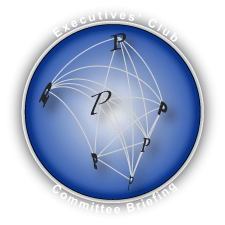 The Executives’ Club of Chicago assembled a visionary panel to give Midwest business leaders their advice for media communications in the (“new” ,^) digital age. Rishad Tobaccowala, CEO, Denuo Group and Chief Innovation Officer, Publicis; Dr. Jim Taylor, Vice Chairman, The Harrison Group and Emily L. Barr, President & General Manager, ABC 7 Chicago were panelists, and Susan D. Whiting, Chairman, Nielsen Media Research moderated the breakfast, which took place 30 January 2007 at Chicago’s Mid-America Club. The Executives’ Club of Chicago assembled a visionary panel to give Midwest business leaders their advice for media communications in the (“new” ,^) digital age. Rishad Tobaccowala, CEO, Denuo Group and Chief Innovation Officer, Publicis; Dr. Jim Taylor, Vice Chairman, The Harrison Group and Emily L. Barr, President & General Manager, ABC 7 Chicago were panelists, and Susan D. Whiting, Chairman, Nielsen Media Research moderated the breakfast, which took place 30 January 2007 at Chicago’s Mid-America Club.
Ours is rapidly becoming a P2P world in which individuals communicate with individuals digitally, and this represents a profound shift for media companies, their clients and everyone’s customers. The focus of the morning discussion was “media”—television, print, radio—which are still largely organized to deliver one message to an audience of many. Of course, the “mass” has always been comprised of individuals, but their alternatives to mass media have been few until fairly recently. Now they are tuning out mass messaging in favor of more relevant communications, which increasingly come from—other individuals. Meantime, people are increasingly connected via the Internet (whether through mobile […]
An Excellent Primer for the Core Competency of the 21st Century
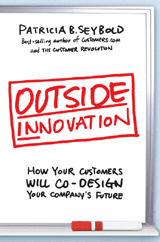 To thrive in the Knowledge Economy, companies will have to learn how to innovate at warp speed, or they will simply slip beneath the surface of the water like stricken liners. Ultra low costs and exceptional quality feature sets are merely expected, and they no longer differentiate. To thrive in the Knowledge Economy, companies will have to learn how to innovate at warp speed, or they will simply slip beneath the surface of the water like stricken liners. Ultra low costs and exceptional quality feature sets are merely expected, and they no longer differentiate.
Conventional wisdom holds that “innovation” cycles reappear every five years, when companies have exhausted the then-current cost-cutting approaches and need to focus on driving the top line.
However, the Knowledge Economy doesn’t call for your father’s innovation. The 21st century kind will require that companies turn themselves inside-out. Winners will learn to engage and catalyze their customers’ creativity. As author Patty Seybold aptly puts it, “Companies with the smartest customers win.” Outside Innovation is an in-the-trenches manual for evolving your company to embrace the innovation imperative.
[…]
We Must Rethink Learning in the Knowledge Economy
 Academicians everywhere are struggling to improve their students’ competitive standings in the global Knowledge Economy, which levels the playing field in many respects. It is far easier to build a world-class competitor in the Knowledge Economy than it was in the Industrial Economy. A strong educational system is a must, along with a highly motivated population, decent infrastructure and incentives for foreign investment. In former times, being a world competitor necessitated gaining control of vast natural resources to produce a strong industrial base from which world-class armies and navies would be built. India currently exemplifies the Knowledge Economy model very well*, and countries worldwide have taken note. Academicians everywhere are struggling to improve their students’ competitive standings in the global Knowledge Economy, which levels the playing field in many respects. It is far easier to build a world-class competitor in the Knowledge Economy than it was in the Industrial Economy. A strong educational system is a must, along with a highly motivated population, decent infrastructure and incentives for foreign investment. In former times, being a world competitor necessitated gaining control of vast natural resources to produce a strong industrial base from which world-class armies and navies would be built. India currently exemplifies the Knowledge Economy model very well*, and countries worldwide have taken note.
However, the Knowledge Economy is drastically changing what people need to learn to succeed, and educators haven’t caught up yet. They are teaching according to Industrial Economy rules, which compromises the performance of their students.
Educators have a special opportunity to create competitive advantage by realizing that the learning proposition is far different today—due to the Knowledge Economy and the role of information in adding value. The speed […]
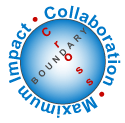 Two recent articles show that even the most intractable problems can be overcome when organizations find ways to align their goals. Sometimes collaboration makes for strange bedfellows—like the military and environmentalists—but opportunity is often highest when when “mashing up” groups that are not used to working together. Innovation can produce surprising value when leaders open their minds, challenge conventional wisdom and make unthinkable changes—like paying a hospital more for treating patients less. Two recent articles show that even the most intractable problems can be overcome when organizations find ways to align their goals. Sometimes collaboration makes for strange bedfellows—like the military and environmentalists—but opportunity is often highest when when “mashing up” groups that are not used to working together. Innovation can produce surprising value when leaders open their minds, challenge conventional wisdom and make unthinkable changes—like paying a hospital more for treating patients less.
These stories are as inspiring as they are instructive because the people involved questioned assumptions, and I hope you enjoy them.
Healthcare Costs Hit in Solar Plexus
Virginia Mason Medical Center is Seattle’s third largest health care provider, and it began innovating in several areas after receiving a wake-up call from Aetna, one of the area’s largest insurers. In 2004, Aetna shared the results of a study that compared treatment costs of Seattle area hospitals. Several of Virginia Mason’s specialty practices were significantly more costly than alternatives, and Aetna was considering excluding those areas from coverage. In the ensuing two years, Virginia Mason innovated by using new workflow strategies in targeted treatment areas. For example:
In the spine clinic, […]
Economic Outlook for 2007 Reveals Pockets of Opportunity + Political Handicapping
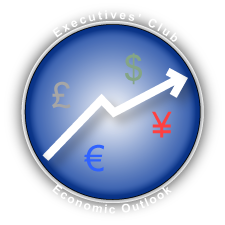 The Executives’ Club of Chicago assembled an all-star panel to give Midwest business leaders their guidance for various aspects of the U.S. economy in 2007. Diane Swonk, Chief Economist of Mesirow Financial, Alan Murray, Assistant Managing Editor of The Wall Street Journal and Robert “Bob” Froehlich, Chairman of the Investment Strategy Committee, Deutsche Asset Management broke out their respective crystal balls for 2007, and the audience was not disappointed for lack of insight or wit. The session was scintillatingly moderated by Terry Savage, Financial Columnist of the Chicago Sun-Times. The Executives’ Club of Chicago assembled an all-star panel to give Midwest business leaders their guidance for various aspects of the U.S. economy in 2007. Diane Swonk, Chief Economist of Mesirow Financial, Alan Murray, Assistant Managing Editor of The Wall Street Journal and Robert “Bob” Froehlich, Chairman of the Investment Strategy Committee, Deutsche Asset Management broke out their respective crystal balls for 2007, and the audience was not disappointed for lack of insight or wit. The session was scintillatingly moderated by Terry Savage, Financial Columnist of the Chicago Sun-Times.
The consensus was that the U.S. economy would have a relatively benign year in 2007. All panelists predicted a higher Dow, and their predictions concurred with Wall Street’s most accurate ,^) indicator, the Super Bowl Predictor. Little of import will happen on the political front, the U.S. economy will grow at a slower pace, and investment returns will be generally highest outside the U.S. Elsewhere, consumer empowerment reared its head in the executive pay issue, […]
China Analysis and Outlook 2007 offers political insight into the global knowledge market.
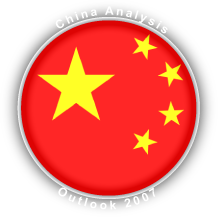 The Strategic Management Association, the Harvard Business School and the CDMA sponsored the 2007 China Outlook, which was given by Lyric Hughes-Hale, Founder China Online in Chicago 9 January 2007. Her presentation was preceded by David Hale’s 2007 Economic Forecast. The Strategic Management Association, the Harvard Business School and the CDMA sponsored the 2007 China Outlook, which was given by Lyric Hughes-Hale, Founder China Online in Chicago 9 January 2007. Her presentation was preceded by David Hale’s 2007 Economic Forecast.
As a long-time China watcher and analyst, Lyric has rare and unusual insights to which I’ll try to do justice before giving my observations. The Global Human Capital Journal also covered the 2006 China Outlook.
[…]
A Must-read Guide to the Importance of Web 2.0 and the Knowledge Economy
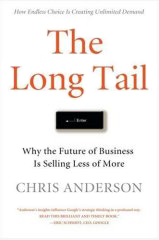 The Long Tail is a watershed book that reflects many of the profound socioeconomic changes wrought by the transition from the Industrial Economy to the Knowledge Economy. The “Long Tail” represents the splintering of the mass market—what is happening, why and how you can thrive in the new era of the niche. Moreover, it shows how the mass market was a temporary phenomenon that developed because niches were not economically viable for producers to address. The Long Tail is a watershed book that reflects many of the profound socioeconomic changes wrought by the transition from the Industrial Economy to the Knowledge Economy. The “Long Tail” represents the splintering of the mass market—what is happening, why and how you can thrive in the new era of the niche. Moreover, it shows how the mass market was a temporary phenomenon that developed because niches were not economically viable for producers to address.
Chris Anderson is editor-in-chief of Wired, and the book has an appreciation for culture, the economics of technology and the importance of innovation. It’s also very well written: Anderson tackles some fairly abstract concepts, but the reader doesn’t trip over them. It’s possible to read the book quickly, but there is plenty of substance for a detailed, reflective reading as well. Difficult to over-recommend!
The Long Tail offers an insightful look into the byte-oriented Knowledge Economy and its movement away from the zero-sum, bits-oriented Industrial Economy—and what this holds for business and culture. The book […]
|
|
 I’ll risk using a hype-laden term like “Web 2.0” in the title: I think most of us have been around long enough to understand that hype doesn’t mean that nothing is there, although it can distract us from seeing things that we should be watching.
I’ll risk using a hype-laden term like “Web 2.0” in the title: I think most of us have been around long enough to understand that hype doesn’t mean that nothing is there, although it can distract us from seeing things that we should be watching.
 Word of Mouth Marketing is an exceptionally useful, insightful and surprising book. Andy Sernovitz has done a masterful job at creating a brief, lucid and tactical guide to realigning your company’s relationships with your customers, quickly and inexpensively. It is very straightforward, honest and full of practical techniques. Moreover, it is very human because it addresses customers as human beings, not demographics. I suspect that this aspect of the book might peeve those marketers that are invested in the difficulty and complexity of their craft. Think about it: when customers were (relatively) mute and invisible, marketers were the intermediary between the enterprise and the customer; in the absence of the customer’s voice, they created models and theories to simulate it. WOM, powered by Web 2.0, means that customers can talk in their own words, and companies can listen. The customer’s back!
Word of Mouth Marketing is an exceptionally useful, insightful and surprising book. Andy Sernovitz has done a masterful job at creating a brief, lucid and tactical guide to realigning your company’s relationships with your customers, quickly and inexpensively. It is very straightforward, honest and full of practical techniques. Moreover, it is very human because it addresses customers as human beings, not demographics. I suspect that this aspect of the book might peeve those marketers that are invested in the difficulty and complexity of their craft. Think about it: when customers were (relatively) mute and invisible, marketers were the intermediary between the enterprise and the customer; in the absence of the customer’s voice, they created models and theories to simulate it. WOM, powered by Web 2.0, means that customers can talk in their own words, and companies can listen. The customer’s back! As readers of these pages know well, I estimate that one of the most poignant changes that faces Industrial Economy enterprises is shifting their primary focus from production and operations to the customer. The Industrial Economy mechanized work and production, and by any measure it created unprecedented wealth by drastically lowering per-unit costs of any kind of product you can name, bringing more products within the means of more people. This worked extremely well while demand exceeded supply: customers were excited to have their first car/house/television, and they were happy with what producers brought to market.
As readers of these pages know well, I estimate that one of the most poignant changes that faces Industrial Economy enterprises is shifting their primary focus from production and operations to the customer. The Industrial Economy mechanized work and production, and by any measure it created unprecedented wealth by drastically lowering per-unit costs of any kind of product you can name, bringing more products within the means of more people. This worked extremely well while demand exceeded supply: customers were excited to have their first car/house/television, and they were happy with what producers brought to market. The Executives’ Club of Chicago assembled a visionary panel to give Midwest business leaders their advice for media communications in the (“new” ,^) digital age. Rishad Tobaccowala, CEO, Denuo Group and Chief Innovation Officer, Publicis; Dr. Jim Taylor, Vice Chairman, The Harrison Group and Emily L. Barr, President & General Manager, ABC 7 Chicago were panelists, and Susan D. Whiting, Chairman, Nielsen Media Research moderated the breakfast, which took place 30 January 2007 at Chicago’s Mid-America Club.
The Executives’ Club of Chicago assembled a visionary panel to give Midwest business leaders their advice for media communications in the (“new” ,^) digital age. Rishad Tobaccowala, CEO, Denuo Group and Chief Innovation Officer, Publicis; Dr. Jim Taylor, Vice Chairman, The Harrison Group and Emily L. Barr, President & General Manager, ABC 7 Chicago were panelists, and Susan D. Whiting, Chairman, Nielsen Media Research moderated the breakfast, which took place 30 January 2007 at Chicago’s Mid-America Club. To thrive in the Knowledge Economy, companies will have to learn how to innovate at warp speed, or they will simply slip beneath the surface of the water like stricken liners. Ultra low costs and exceptional quality feature sets are merely expected, and they no longer differentiate.
To thrive in the Knowledge Economy, companies will have to learn how to innovate at warp speed, or they will simply slip beneath the surface of the water like stricken liners. Ultra low costs and exceptional quality feature sets are merely expected, and they no longer differentiate. Academicians everywhere are struggling to improve their students’ competitive standings in the global Knowledge Economy, which levels the playing field in many respects. It is far easier to build a world-class competitor in the Knowledge Economy than it was in the Industrial Economy. A strong educational system is a must, along with a highly motivated population, decent infrastructure and incentives for foreign investment. In former times, being a world competitor necessitated gaining control of vast natural resources to produce a strong industrial base from which world-class armies and navies would be built. India currently exemplifies the Knowledge Economy model very well*, and countries worldwide have taken note.
Academicians everywhere are struggling to improve their students’ competitive standings in the global Knowledge Economy, which levels the playing field in many respects. It is far easier to build a world-class competitor in the Knowledge Economy than it was in the Industrial Economy. A strong educational system is a must, along with a highly motivated population, decent infrastructure and incentives for foreign investment. In former times, being a world competitor necessitated gaining control of vast natural resources to produce a strong industrial base from which world-class armies and navies would be built. India currently exemplifies the Knowledge Economy model very well*, and countries worldwide have taken note. Two recent articles show that even the most intractable problems can be overcome when organizations find ways to align their goals. Sometimes collaboration makes for strange bedfellows—like the military and environmentalists—but opportunity is often highest when when “mashing up” groups that are not used to working together. Innovation can produce surprising value when leaders open their minds, challenge conventional wisdom and make unthinkable changes—like paying a hospital more for treating patients less.
Two recent articles show that even the most intractable problems can be overcome when organizations find ways to align their goals. Sometimes collaboration makes for strange bedfellows—like the military and environmentalists—but opportunity is often highest when when “mashing up” groups that are not used to working together. Innovation can produce surprising value when leaders open their minds, challenge conventional wisdom and make unthinkable changes—like paying a hospital more for treating patients less. The Executives’ Club of Chicago assembled an all-star panel to give Midwest business leaders their guidance for various aspects of the U.S. economy in 2007. Diane Swonk, Chief Economist of Mesirow Financial, Alan Murray, Assistant Managing Editor of The Wall Street Journal and Robert “Bob” Froehlich, Chairman of the Investment Strategy Committee, Deutsche Asset Management broke out their respective crystal balls for 2007, and the audience was not disappointed for lack of insight or wit. The session was scintillatingly moderated by Terry Savage, Financial Columnist of the Chicago Sun-Times.
The Executives’ Club of Chicago assembled an all-star panel to give Midwest business leaders their guidance for various aspects of the U.S. economy in 2007. Diane Swonk, Chief Economist of Mesirow Financial, Alan Murray, Assistant Managing Editor of The Wall Street Journal and Robert “Bob” Froehlich, Chairman of the Investment Strategy Committee, Deutsche Asset Management broke out their respective crystal balls for 2007, and the audience was not disappointed for lack of insight or wit. The session was scintillatingly moderated by Terry Savage, Financial Columnist of the Chicago Sun-Times. The Strategic Management Association, the Harvard Business School and the CDMA sponsored the 2007 China Outlook, which was given by Lyric Hughes-Hale, Founder China Online in Chicago 9 January 2007. Her presentation was preceded by David Hale’s 2007 Economic Forecast.
The Strategic Management Association, the Harvard Business School and the CDMA sponsored the 2007 China Outlook, which was given by Lyric Hughes-Hale, Founder China Online in Chicago 9 January 2007. Her presentation was preceded by David Hale’s 2007 Economic Forecast. The Long Tail is a watershed book that reflects many of the profound socioeconomic changes wrought by the transition from the Industrial Economy to the Knowledge Economy. The “Long Tail” represents the splintering of the mass market—what is happening, why and how you can thrive in the new era of the niche. Moreover, it shows how the mass market was a temporary phenomenon that developed because niches were not economically viable for producers to address.
The Long Tail is a watershed book that reflects many of the profound socioeconomic changes wrought by the transition from the Industrial Economy to the Knowledge Economy. The “Long Tail” represents the splintering of the mass market—what is happening, why and how you can thrive in the new era of the niche. Moreover, it shows how the mass market was a temporary phenomenon that developed because niches were not economically viable for producers to address.